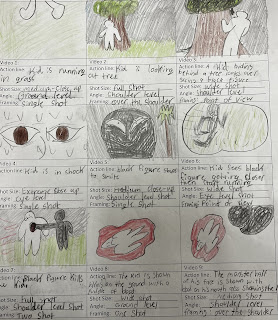For this blog post I will be sharing my progress on the camera angles portion of the PowerPoint. Like I mentioned in the blog before I used previous preliminary exercises for references on shots and refresher on how these shots work. Like the shot sizes portion of the PowerPoint a few of these shots had to be scrapped because they just were not possible. The One, Two, Three, and Four shots showcased more gruesome shots, but we ended up not going with that because we wanted a comedy, so we didn’t want it to seem too dark. We asked a couple of students around if they could help us with certain shots, but we were unable to reference them in the PowerPoint because none of us knew them. For the crowd shot we just used other students in the media studies class. Overall, this part was by far the most fun part on the PowerPoint and me and my teammates had the easiest time getting through this part.
.png)
.png)
.png)
.png)
.png)
.png)




.png)
.png)
.png)